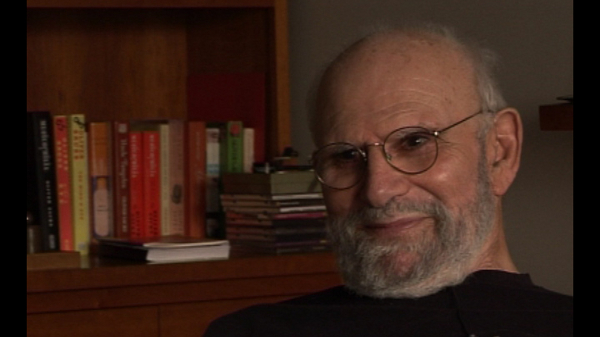Then there was the memory artist, Franco Magnani, one of his pictures is hanging up here. The Exploratorium in San Francisco had an astonishing exhibit called The Memory Artist, in which pictures of Pontito, the little Tuscan village where Franco had been born, were apposed to photographs taken from the same viewpoint, and there was an astounding accuracy of these paintings, and I got to meet Franco. I visited his house, which was full of paintings and I got his story, which was a very singular one. He told me how the Nazis had entered Pontito in... in the war and done a lot of damage there, and how upset his mother had been and how he, as a child, had said, 'I shall make it again for you'.
And then he described his early life, he’d been a sailor, he’d roved to and fro, he hadn’t really known what he was to do, where he was to live, he didn’t know himself. And then his decision to live in America, to live in San Francisco and the strange crisis which befell him when there was high fever, there were nightmares, maybe there were seizures, and in these he would see Pontito as it had been before the Nazis came. And when he left hospital he continued to have visions of Pontito. I would... sometimes when I was with him, he would lean forward and his pupils would dilate and he would stare at something and perhaps move around and he would tell me then that a three-dimensional, sort of holographic model of Pontito had risen in front of his eyes and then he started to paint what he could see so clearly. This, I think, was the first time I had… so I didn’t think of Franco as a neurological patient, but he was an artist, and yet he was being inspired by something very extraordinary in neurological terms, an amazing power of reminiscence. He didn’t have a prodigious memory in... in other ways, but... but his memory of Pontito... his memories consumed him, I mean, there were clearly obsessive things, but the sheer power of, whether it was imagination or hallucination, and of ability to actualise this in painting.
So, this was a new departure for me and my story of Franco, I’m not sure that case history is the correct term, it may have been more like a novella, although I think it was full of careful observations that appeared in The New Yorker in, I forget, the... the early 90s. So, there was the... the colour-blind painter, there was the man given vision in middle life, there was Franco with his visions and there was Stephen Wiltshire in England. One of my Hat pieces had been about an autistic boy who had an amazing talent for accurate drawing.






